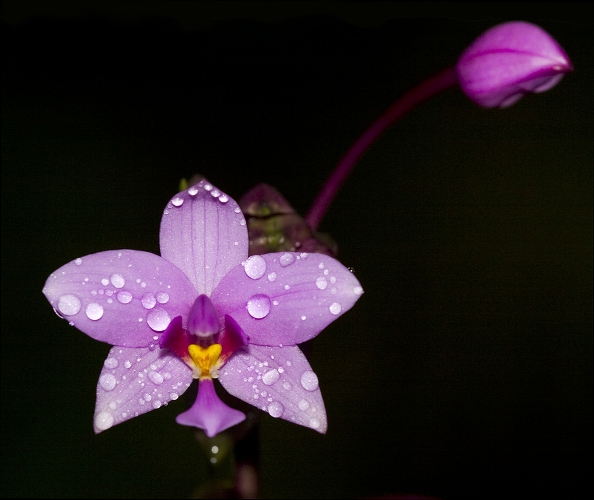
Dendrobiums are one of the largest species of orchids with over 1,200 genera spreading throughout the world. As such, when choosing to grow them, many orchid growers cannot avoid making mistakes that are common to a large variety of species.
They are classified in two groups – the evergreens and the deciduous plants. These two types are quite different from each other, but both of them can be grown successfully in greenhouses or other such structures.
If you choose to grow dendrobiums, the deciduous type is considered better for beginners because they are tougher and more resilient to beginners’ mistakes. On the other hand evergreens, when confined in greenhouses and similar places, are very easy to grow as long as the proper climatic conditions are met.
Dendrobiums in general need high moisture content and have intermediate light requirements. During the growth season they are best kept under shaded areas where the sun can sufficiently provide them with light at certain times of the day.
To further help you with the successful cultivation of these orchids, here are the 4 most common mistakes that orchid growers make when growing dendrobiums.
Sleeping Orchids
During winter, deciduous dendrobiums go into a sort of hibernation. They slowly lose their leaves and seem to look dead but are very much alive. This period of rest is called dormancy or the ripening period.
At this very crucial time, the first mistake happens. The usual requirement for a growing dendrobium is plenty of humidity and medium sunlight. This will ensure that the plant will provide plenty of thriving flowers when the time comes. But during winter, you should not do this! Dendrobiums in their ripening period actually have very different requirements. During this time they should be exposed to as much sunlight as they can stand. Never place them in areas where they are shaded. Try to place them beside windows or anywhere sunlight can reach them.
During this period, dendrobiums do not need a lot of moisture. Very little water will be enough to keep their roots alive. Also keep in mind that their roots constantly need plenty of air circulation.
Baby Orchids
The second mistake that orchid growers make is when they are trying to propagate and flower dendrobiums.
Evergreens are more lenient compared to deciduous plants when propagating. Evergreens can produce new growths without affecting their blooming cycle, while deciduous pseudobulbs can only produce flowers once. As soon as an evergreen’s flowers shed, immediately cut the stem at the bottom where there are new shoots. Cut them into two or more divisions and then pot them. Be sure though that the stems you collected have two or more pseudobulbs. And never throw away the old pseudobulbs because they can still produce flowers the following year.
While deciduous dendrobiums’ old pseudobulbs may be cut into several pieces and potted in order to propagate after flowering, be sure that the cuttings have one or two nodes each. Pot them on moist sand and place them somewhere humid, warm and shaded.
Making the Cut
This next mistake is also about the propagation of deciduous dendrobiums. Sometimes because of the season of the year the nodes of the cuttings have difficulty growing new plants. To avoid this, orchid growers usually choose spring time to grow new plants.
But when orchid growers decide to do this outside of spring, they can use growth hormones that will ensure new growth at its nodes. When handling other plants, you usually dip the bottom part of the cut in hormone powder to stimulate root growth. In the case of these orchids, you must dip the top end of the cuttings instead of the bottom. Orchids produce new growths first, and then the roots will develop right after.
Size Matters
The final mistake is during potting. Choosing the correct size of pot to use is critical. Among all orchids, dendribiums are described as having the thinnest and least extensive roots. This means that large pots are a big no-no. If you can, find and use the smallest pot that it can fit into. A smaller pot is more desirable because its roots can thrive better. After its flowering year you can replace the pot and choose the next best container that can fit its new size.
Dendrobiums are a great choice. Sure, they may be more work for you, but once you learn the simple do’s and don’ts, growing them will be a walk in the park.
Mary Ann Berdak is the publisher of OrchidCareZone.com – an online destination for orchid growing tips and advice. For more information on caring for your orchid plants, download her free report, “The 5 Biggest Orchid Mistakes (and How to Avoid Them!)”, at OrchidSecretsRevealed.com.



Comment here